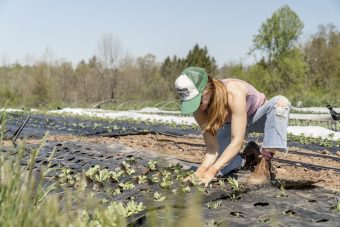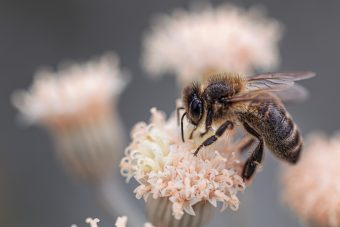
Humanity depends on ecosystems, such as forests, wetlands and rivers, to survive. They provide clean water, house animals, like bees, that are essential to food production, and play a key role in combating the climate crisis.
But around the world, landscapes are degrading at an alarming rate, which along with pushing one million species towards extinction is taking a mounting economic toll, including on the farming sector.
In Europe, for instance, soil erosion affects 12 million hectares of land – about seven per cent of all farmland – and costs farmers 1.25 billion euros annually in lost productivity, according to European Union data.
“Unsustainable land-use practices from the way we build cities to the way we grow food is harming not just the planet and our livelihoods but our ability to feed eight billion people,” said Natalia Alekseeva, UNEP Coordinator for the UN Decade on Ecosystem Restoration. “Ecosystem restoration and nature-based solutions have proven to bring countless benefits to communities and societies around the world,” she added.
More:
- AQUAPONICS – A QUIET ECOLOGICAL REVOLUTION IN AGRICULTURE
- FOOD PRICE INFLATION ESCALATES GLOBAL HUNGER CRISIS
- GROUND-BREAKING DATA PLATFORM PLAYS KEY ROLE IN TACKLING ACUTE FOOD INSECURITY IN FOOD CRISES
Globally, there is growing momentum to revive natural spaces, both on land and below water, that have been marred by human development, a process known as ecosystem restoration.
Experts say that along with protecting nature, this can help farmers boost their yields and bolster global food security. It is estimated that every dollar invested in land restoration and sustainable land management can yield up to 30 US dollar in economic benefits, including increased crop yields, improved water availability and reduced land degradation.
Similar benefits hold true for fisheries. Two-thirds of ocean ecosystems are degraded or modified and one-third of marine fish populations are fished unsustainably. However, restoring mangrove forests along coastal areas, where young fish breed, could add 60 trillion edible fish to coastal waters every year.
Here’s a closer look at three ways humanity can restore landscapes and supercharge food production.
Revive the soil
Roughly 80 per cent of global arable land is impacted by at least one form of degradation, such as aridity, vegetation decline, soil salinization and loss of soil carbon. Soil erosion alone affects about one-fifth of farmlands worldwide and is estimated to have increased by 2.5 per cent between 2001 and 2012, primarily due to deforestation and cropland expansion.
Land degradation already negatively impacts 3.2 billion people – that’s 40 per cent of the world’s population. And it is projected that land degradation could reduce global food productivity by 12 per cent, causing food prices to soar by up to 30 per cent by 2040.
Restoring soil fertility and structure can be done in several ways, including rotating crops, applying organic matter, and practicing minimal or zero tillage farming.
A prime example of this kind of work comes from Africa, where along the semi-arid margins of the Sahara Desert, 11 countries are building what has become known as the Great Green Wall, a continent wide ribbon of vegetation. In many places, the barrier is helping to hold back the desert, which states are hopeful will help bolster food security, counter poverty and promote peace.
Bring back the buzz

Bees are one of the best pollinators in the world, making them vital for global food production. Of the 100 crop species that provide 90 per cent of the world’s food, over 70 are pollinated by bees. But pollinators are under threat. The continued decline of bee populations would have disastrous impacts on global agriculture and food security.
According to a UNEP report, some 20,000 flowering plant species upon which many bee species depend for food could be lost over the coming decades without greater conservation efforts. However, if done in harmony with nature, agriculture – one of the biggest drivers of biodiversity loss – can be pollinator friendly, which ultimately helps bees and farmers alike.
To make agriculture bee friendly, farmers can eliminate bee-harming pesticides, plant native plants that provide nectar and pollen throughout the bloom season, and build nesting sites to ensure that bees thrive.
Diversify crops
The world has over 50,000 edible plants. However, just three of them, rice, maize, and wheat, provide over 50 per cent of the world’s food energy intake.
Over-reliance on a few crop varieties can make global agricultural systems vulnerable to pests, diseases, climate change and exacerbate soil degradation and water scarcity that will ultimately result in greater food insecurity.
However, by adopting more sustainable agriculture and growing and eating more diverse vegetables, fruits and crops will not only help revive biodiversity, it will also help adapt to climate change, increase resilience and offer more healthy diets.
Source: UNEP



